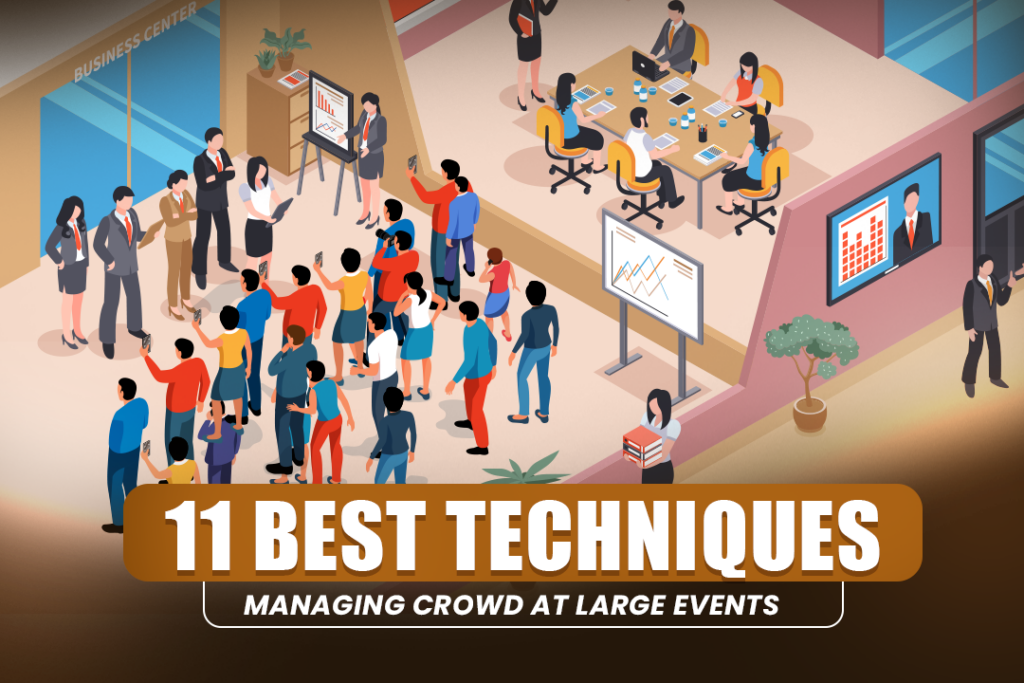
Managing crowds at a large in-person B2B event is a big responsibility for any event planner. Surely, no event planner wants injuries, emergencies, brawls, or anything dangerous at their event. An effective crowd management technique ensures the crowd is safe and controlled.
This article will explore the best techniques for managing events at large crowds. These techniques will enable event planners like you to foresee problems and equip you with tools to mitigate those risks actively.
What Is Crowd Management In B2B Events & How Are They Important?

Before diving into specific strategies and techniques for crowd management techniques, it’s important to understand the concept of crowd management. Crowd management is a range of measures and activities aimed at controlling, managing, directing, and ensuring the safety and security of large crowds. It requires meticulous planning, coordination, allocation of resources, and implementing strategies to prevent overcrowding, maintain order, and provide attendees with the best event experience possible.
Research Nester, a leading market research firm, states that the crowd management market size was valued at USD 1.3 billion in 2023 and is projected to surpass USD 9.7 billion by 2036. In any large-scale B2B event, crowd management efforts run in the background to ensure that the event runs smoothly without any problems while allowing you, as an event planner, to provide the best event experience possible.
There are dedicated crowd managers whose entire job is to control and manage large crowds from behind the scenes, as these crowd management efforts are mostly kept hidden from attendees. These activities allow the event organizers to predict unforeseen circumstances, use the contingency plan, and mitigate the problem before it gets out of control. Therefore, crowd management techniques are essential for ensuring crowd safety at large events.
11 Best Techniques For Crowd Management Events
Here are the 11 best practical crowd management techniques and strategies to ensure your large-scale event runs smoothly.
1. Know Your Audience

A thorough understanding of your event attendees is paramount for successful crowd management. Collect information and gain insights into demographics, behavioral patterns, and potential risks related to different groups of people. To develop an effective mitigation strategy, use this data to run simulations involving your weak points, crowd scenarios, and possible problematic situations. It also helps you plan the number of event staff and security personnel required, strategies to design the venue, and ways to develop a contingency plan.
Additionally, your attendee data can help you uncover flaws in your event planning that might’ve gone unnoticed. For example, your registration data analysis found that your event venue is not equipped with enough women’s restroom facilities. You can then proactively add more restroom facilities and other amenities. Therefore, accurate knowledge of your audience can ensure overall event safety and security.
2. Conduct A Risk Assessment
As an event planner, your job is to conduct a thorough risk assessment of the venue before the event commences. This involves evaluating the venue layout, crowd density, weather conditions, and access points. Moreover, you can run simulations using attendee and registration data to identify potential safety issues and implement appropriate mitigation strategies and measures. The end of conducting a risk assessment is to be aware of potential risks that may negatively impact the event. An unknown and unaccounted problem can be a disaster, so your task is to account for any possible worst-case scenarios related to your event. This will allow you to plan effective strategies for each scenario, ensuring you are always ready for the worst.
Conducting such risk assessments can ensure that your event runs smoothly and all potential risk factors are eliminated. By knowing all the known risk factors, you can minimize or eliminate them proactively.
3. Implement Reserved Seating and Zoning of the Venue
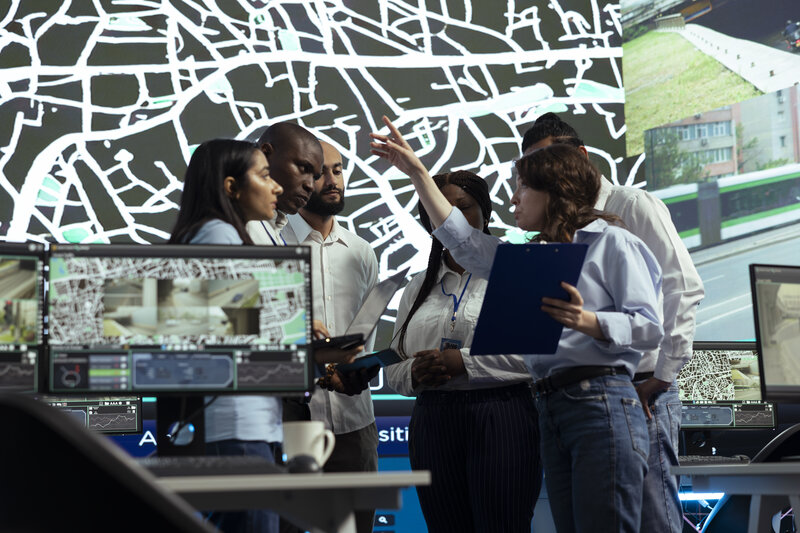
As an event planner and crowd manager, your most significant challenge for safety management in a large-scale event is overcrowding. As such, you should take every step to curb overcrowding by zoning the entire venue into different sections designated for specific purposes and audience types. For example, let’s say you’re organizing a three-day B2B event, and you know, with your registration data, that there’ll be a large footfall on the second day of the event for the trade show. You can zone your venue accordingly by redirecting more seats, spaces, and staff to the trade show section, where you know there’ll be a large gathering.
Similarly, with your attendee data, you can separate your event venue into different sectors for specific sessions, where only one section of the venue will be used by a select group of people for a particular purpose. This will allow you to manage large crowds by not having everyone in the same place and avoiding overcrowding and potential risks.
Furthermore, you can implement reserved seating for everyone to avoid overcrowding and unnecessary congestion at the venue. By reserving every seat for specific people, you can eliminate confusion and ensure your attendees have a comfortable experience throughout the session. You can also train your staff to ensure attendees stick to their assigned seats and are assisted if they face any problems. These measures will allow you to provide an effective crowd management plan to manage large crowds.
4. Create a Security and Check-In System
Creating a security system is crucial for any large-scale B2B event. You want to protect your attendees and the overall event from external threats while maintaining internal security. Security is the silent protector of your event, working in the background and maintaining harmony and order at the event. Without it, managing the event will be challenging, if not impossible.
Therefore, you should establish security checkpoints at every junction possible to create a safe perimeter surrounding your event venue. Security measures include implementing security checkpoints at every significant entrance, employing metal detectors, having security cameras at every event corner, and deploying well-trained security personnel to maintain order and protection from threats.
Similarly, efficient check-in processes ensure attendees don’t encounter unnecessary hassles upon joining the event. As entering the event venue is the most impressionable aspect by which attendees will judge the entire event, you must utilize all measures for a smooth registration and check-in process while maintaining security.
Brett Little, ARUP’s People Movement Lead, gave an interesting insight into how event planners can set up engagement zones or other fun activities and “flatten the arrival curve” by encouraging attendees to arrive at the event venue early and participate in them. This will lead to fewer crowds at the entry gate and potential revenue for the event from the activity zones.
Event organizers can use queue management systems to organize lines effectively and prevent bottlenecks. Leveraging crowd monitoring systems can identify potential overcrowding scenarios at the check-in queue, thus giving you time to develop an effective solution. Therefore, your job is to streamline the check-in process by reducing queues, optimizing wayfinding, and maintaining easy navigation for attendees to their designated places.
5. Maintain Clear Signage in the Event Venue
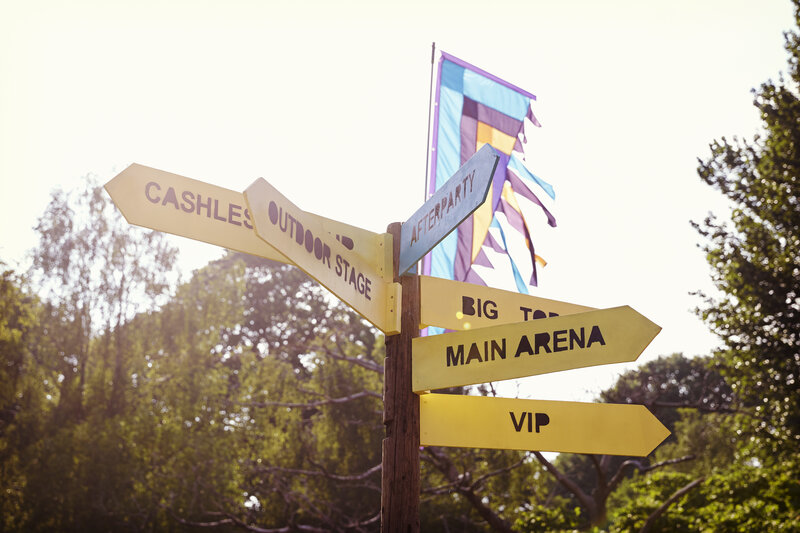
One of the easiest ways to avoid overcrowding at your event is to provide clear signage for navigating the venue. Use plenty of signage to ensure attendees can quickly and clearly find their way around the venue.
As confusion due to a lack of clear signage and proper navigation facilities is the most common cause of overcrowding and brawl at any large-scale event, you can take appropriate measures to avoid such issues. Ensure you prepare the venue with signs for clear directions to the nearest washrooms, where the queues begin at the entrance, designated smoking areas, restricted staff areas, etc.
You can install a giant map of the entire event and a schedule at the main entrance and equip every attendee with a navigation map and event schedule on their event app or welcome kit. This will clear all confusion and provide a good experience for the attendees.
6. Have an Emergency Plan Ready
Despite your best efforts at mitigating potential risks and planning for all emergencies, you must acknowledge that unforeseen circumstances will always exist. However, uncertain situations don’t render you powerless if you have a contingency plan for such cases. These uncertainties include sudden weather changes, a fire breakout, a crowd brawl, or people bringing in weapons. Therefore, having an emergency plan ready for all those situations can ensure crowd safety at your event.
Effective crowd management events require you to be prepared for all types of emergencies, particularly medical emergencies, as these are the most common ones in any large-scale event. Overcrowding leads to confusion, and confusion and misunderstanding can lead to brawls, which means injuries and other medical emergencies. As such, you must have your trained medical personnel strategically scattered throughout the event so that medical response is available for everyone immediately.
Joseph Pred, Founder and CEO of Mutual Aid Response Services, emphasizes this point by saying that “these days, regardless of how small your event is, you need to consider what first aid and medical resources you have on-site partially because in most cases it’s a requirement but also because it’s a best practice to create a safe environment for your staff and attendees, the health and safety of your employees and staff you should have a small medical team on-site providing first aid and to support staff in case of injury.”
Set up well-stocked and staffed medical stations near high-traffic areas and every section. Additional measures include allocating specific lanes for first responders (fire brigade, ambulance, law enforcement, etc.), appointing liaison staff to contact medical emergency services, creating contact with local hospitals in advance, documenting all incidents, and effectively communicating about safety.
7. Facilitate Robust Communication

An insightful statistic by a corporate security group, The Constellation Group, shows that approximately 70% of safety-related event issues result from poor communication. Effective communication ensures that event organizers, specialized crowd managers, staff, and attendees are on the same page, allowing better coordination and a safer environment. As an event organizer, you can convey essential information to your attendees, like event schedules, emergency procedures, and safety guidelines. It is your responsibility to ensure that your attendees are well-informed about emergencies and the code of conduct associated with them. For example, if there’s a climate emergency, your attendees should know about it and the appropriate action that follows.
In any emergency, you must quickly inform attendees about evacuation procedures, safe zones, potential danger, etc. In tense environments, panic, fear, and confusion spread quickly in crowded areas and can be dangerous. Proper and timely communication can eliminate confusion and calm their fears. You can use various communication channels to convey emergency information like SMS text messages, flash messages, or showing clear signs on the digital walls at the venue. The power of robust communication and the value of team collaboration is highlighted by Allison Webb, Global Brand Strategy and Activation at Qualtrics, in her interview with Event Marketer’s Week 2024, where she emphasizes the importance of helping each team member, supporting them, and lift each other when there’s a crisis. This allows your team members to calm down and, in turn, help attendees.
8. Calculate and Hire Trained Staff and Security Personnel
You must ensure the correct number of trained staff and security personnel at your event. Being understaffed can lead to chaos and mismanagement and compromise the overall safety of your attendees and the event. Alternatively, having more personnel than necessary can lead to inefficient crowd management. To determine the appropriate number of staff and security personnel, you’ve got to consider the number of expected attendees, venue size, and the complexity of crowd dynamics.
Having the correct number of staff is not enough if they’re not adequately trained or equipped to handle your event. It is similarly essential to have trained staff and security personnel who can see the event from your perspective and scout problems before they manifest. Prioritize hiring trustworthy, attentive, well-versed in security procedures and experienced staff for your event. Also, some paramedics and EMT staff should be employed for emergencies.
Jessie States, Director of MPI Academy, highlights the importance of trained staff and security personnel, saying that “having trained staff and processes in place for rapid dissemination of specific instructions are critical in preventing and mitigation potential problems.”
9. Utilize Advanced Crowd Monitoring Systems and Technologies
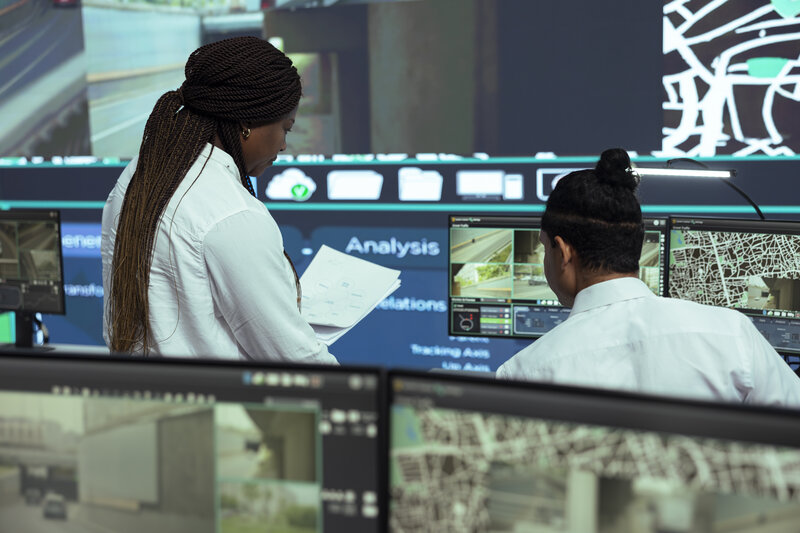
Effective use of technologies can make a big difference in managing the crowd at your event. Measures like switching to online tickets and registration can make joining your event venue much faster and safer, thus avoiding crowded queues. It’ll also allow you to collect essential data about your attendees, which you can use to provide a more personalized event experience. Additionally, QR codes should be implemented to join different sessions and make purchases. Utilize chatbots and event mobile apps to assist attendees with queries or confusion, thus eliminating overcrowding at the help desk or reception.
Basically, you can use event technology to make navigating your event easier with tools like real-time chatbots and crowd management software that make events safer and more organized. Read this article: “Top 27 Event Management Software for On-Site Event Efficiency” to learn more about event technology and tools.
Besides delivering convenience, you can employ services like advanced crowd-monitoring systems. These systems can perform crowd monitoring at large-scale events with high-definition cameras, drones, and other surveillance systems to provide a comprehensive view of the crowd, enabling real-time monitoring and quick identification of potential issues.
Moreover, you can track crowd movements over a specific space using crowd management apps and RFID wristbands to predict possible overcrowding. Data analytics can help you monitor crowd behavior based on attendee and registration data and flag potential risk areas by anticipating unusual patterns and crowd movements by collecting historical data, social media trends, and surveillance feeds.
Similarly, based on the data provided by The Constellation Management Group, AI-based crowd analytics has been proven to improve incident detection and reduce response rate by 40%. This predictive approach allows for preemptive actions, like adjusting barrier placements, redirecting security personnel, and informing local law enforcement before any crisis occurs.
10. Inform Relevant Authorities
You must inform all the stakeholders at your event, especially external authorities like law enforcement agencies and nearby businesses. This will help establish a straightforward communication process and coordination efforts for a smooth crowd management event. For example, you should inform some nearby local restaurants that many people from your event might come in. This will help them plan their itinerary and prepare for crowds without overwhelming them.
Therefore, effective crowd management strategies are not only applicable to your event venue but also to the surrounding areas. Informing people and organizations affected by your event will enable you to manage crowds effectively outside your venue. Measures like coordinating with traffic police to ensure safe crossing of the roads or informing local businesses that they might see more crowds than usual so that they can make space for your attendees can help manage crowds outside of the event.
11. Prepare for the Weather

Preparing for the weather might sound simple, but avoiding overcrowding at your event is essential. Imagine you’re holding a session outside, and it starts raining, making the attendees rush back to the event venue via the entrance. With that many people rushing together in the same place, it’s bound to get overcrowded with long bottlenecked queues. Sure, you can take many measures to avoid congestion, like using data analytics to predict crowding, installing sheds outside, facilitating multiple entrances, etc. However, the most straightforward thing would be to stay informed of the weather and avoid having an outside session.
You can take multiple measures to be prepared for any weather-related emergencies, including keeping a close eye on weather forecasts, planning for shelter around your event venue, eliminating all outside activities during extreme weather, preparing for heatwaves (if any), and lastly, having a robust emergency communication plan to convey weather alerts to your attendees.
Best Tips To Consider While Building A Crowd Management Plan
Now that you know the best strategies and crowd management techniques, you should also understand some factors or elements that must be considered when creating a crowd management plan for your event. Jessie States asks every event planner to “ask what type of event am I hosting and why is the crowd coming to this venue” to answer for various factors and considerations needed before planning for crowd management. Here are some of the things to consider:
- Monitor your attendee count – Closely monitor attendee registrations and onsite check-ins to ensure you have enough staff, security, medical staff, and ushers.
- Understand your event venue – Be aware of your venue size and location, and map your venue layout accordingly, considering clear navigation signage and attendee convenience. Install signage for every permissible and non-permissible activity.
- Have a communication plan – Prepare yourself with all the necessary communication equipment to convey your message readily without any issues. Train your staff and crowd managers about communicating emergency procedures.
- Create a contingency plan—If things go wrong, you must have a contingency plan to tackle that problem. Use all your available resources to predict, identify, and mitigate potential risks.
Key Takeaway
Crowd management events demand a lot from crowd managers and event planners, but with the above techniques, you can confidently organize a large-scale B2B event without any hassles. The key is to prepare yourself for the worst by thinking one step ahead of everyone. This foresight can help you plan an event that tackles any problem or emergency.
You can also visit Eventible for more suggestions for your crowd management efforts. The website has a vast collection of authentic event reviews from attendees, which can be used to gain insight into what the attendees want and expect from the event, including crowd management and safety.


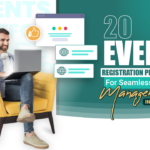

Comments are closed.